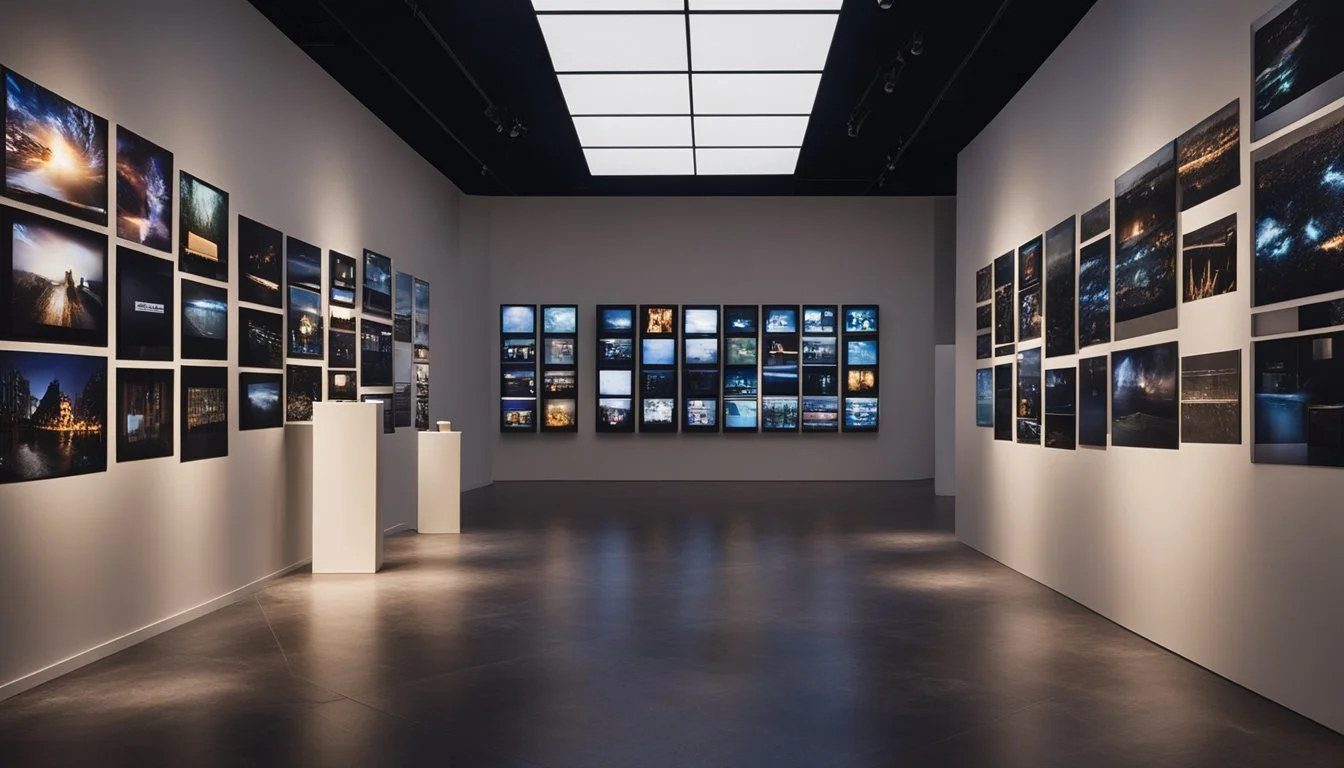Classic artwork
Successful black businessman looking at camera celebrating success got promotion. Successful proud black businessman looking at camera celebrating victory got promotion or reward, happy african employee taking congratulations from colleague on professional achievement in office
Social buttons thumb up like and red heart background islandfestgrosseile.com/. Social media likes falling background for advertisement, promotion. Social buttons thumb up like and red heart background. Social media likes falling background for advertisement, promotion, marketing, internet, SMM, CEO – for stock
Joyful excited young latin woman receive reward for good job. Getting promotion. Joyful young latin woman office worker yell look on pc screen receive recognition reward for good job from boss. Female scientist feel excited to find solution of difficult problem
Cinematic artwork
Throughout the cinematic past, film directors have borrowed a cue from fine arts, referencing well-known paintings. Direct imitations, as well as coded allusions, have been made in a bid to provide depth, symbolism, and poignancy in film. In a bid to blend classical paintings and modern narratives, film directors make interesting visuals in a gesture of respect for arts in the past and a contribution to storytelling.
The excellent “Shutter Island” (2010) pays homage to Klimt’s most iconic work: “The Kiss” (1908-1909). The scene where Teddy Daniels (Leonardo DiCaprio) embraces the illusion of his wife Dolores (Michelle Williams) brilliantly echoes Klimt’s lovers.
As cinema evolved, several key techniques emerged that had a significant impact on visual storytelling, influencing not only filmmakers but also painters. One of the most important of these techniques is composition and framing. Early filmmakers like D.W. Griffith and Sergei Eisenstein developed sophisticated methods for framing their shots to enhance narrative and emotional impact. The use of close-ups, wide shots, and carefully composed frames allowed filmmakers to guide the viewer’s attention and create a sense of depth and perspective that was previously unattainable in traditional painting.
Spanning three decades in the life of the eponymous character, viewers are presented with a feature length homage to Edward Hopper, which also explores the culture and zeitgeist of mid-twentieth century America. With incredible attention to detail, thirteen of Hopper’s paintings are brought to life in this extraordinary indie film by director Gustav Deutsch, and cinematographer Jerzy Palacz.
Kurosawa, 80 years old at the time, makes a clear metaphor here in relation to his own artistic ambitions – he went on to make two more films after this. The sequence transitions to the aforementioned dreamer literally walking through several other Van Gogh paintings before coming back to the wheat field, where a flock of crows scatter into the azure sky.

Theatrical artwork
Contemporary theatre artists are experimenting with multi-disciplinary collaborations that merge performing arts with other forms like painting, opera, and digital platforms. This synergy has led to new formats where physical and digital spaces converge, offering audiences unprecedented visual and auditory experiences.
Artists, meanwhile, were pretty much guaranteed a success, given their subject’s fame. Hogarth sold his painting of Garrick as Richard III for £200 — a sum that he himself noted, with pride if also exaggeration, ‘was more than any painter was known to receive for a portrait’.
The Roman Empire later adopted and adapted Greek theatrical traditions, further shaping the evolution of theater. As centuries passed, medieval European mystery plays and morality plays emerged, marking a shift from religious to secular themes.
Gentileschi’s Judith and Holofernes is perhaps one of the strongest representations of theatrical climax within Baroque painting. Utilizing Caravaggian tenebrism and chiaroscuro on the figures, Gentileschi implies a powerful sense of dramatic stage lighting, as well as urgent, swift movement. The scene itself has an almost Shakespearian vibe to its violence, bearing strong tonal resemblance to the assassination of Caesar. Indeed, the Apocryphal story of Judith beheading the Assyrian Holofernes was memorable for both its religious relevance and its purely compelling nature as a narrative, and Gentileschi communicates the drama of the entire ordeal in spades through the implied choreography of her actors, as well as her choice of environmental tone and design. One of the reasons this piece stands out is because it seems very literally “staged”, with the dark black background being strongly reminiscent of a black curtain in a theater. Tenebrism in painting is not so different from the backdrop of a stage, and, especially in this case, serves to create an almost identical effect.
Contemporary handbooks for actors recommended that they visit galleries to study gestures and poses. They ‘ought not to be a stranger to painting and sculpture’, as the theatre critic Charles Gildon put it in 1710.
There is a widespread misconception that the art of theatre can be discussed solely in terms of the intellectual content of the script. Theatre is not essentially a literary art, though it has been so taught in some universities and schools. For many years the works of the Greek dramatists, Shakespeare, and other significant writers such as Friedrich von Schiller were more likely to be studied than performed in their entirety. The literary side of a theatrical production works most effectively when it is subordinated to the histrionic. The strongest impact on the audience is made by acting, singing, and dancing, followed by spectacle—the background against which those activities take place. Later, on reflection, the spectator may find that the meaning of the text has made the more enduring impression, but more often the literary merit of the script, or its “message,” is a comparatively minor element.


